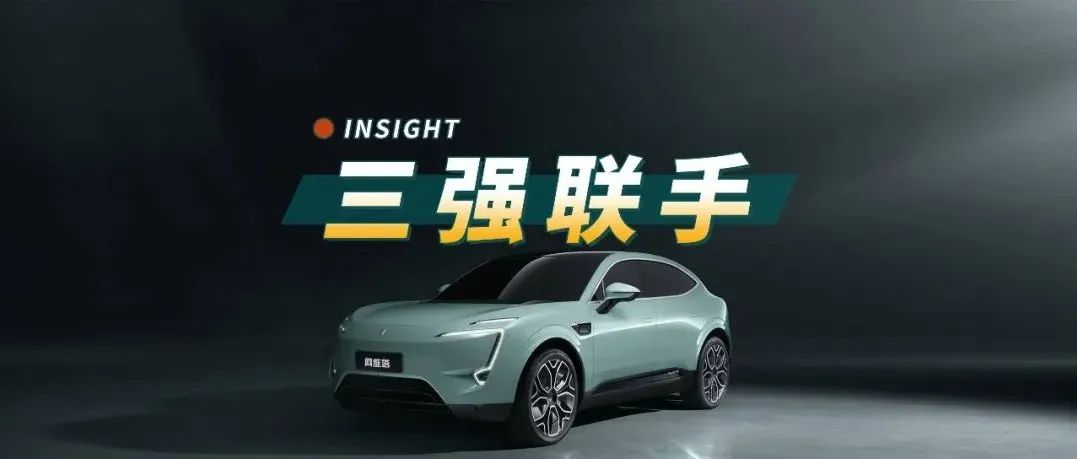Author: The Office
On March 29th, Avita Technology announced the completion of its initial round of strategic financing; on the same day, IM L7 held its first edition communication meeting; the day before that, the first batch of NIO ET7 were delivered at the NIO-JAC Hefei factory.
New brand actions frequently appear on the headlines of automotive media, which is not as common in the automotive industry as it used to be. It seems that overnight, young new brands have the courage to try to explore the traditional luxury brand camp led by BBA, whose basic market is extremely stable.
This is certainly not a coincidence; to some extent, it is the inevitable result of the transformation of the automotive industry toward intelligence and electrification.
New Players Define the New High-end
In the past few years, the global automotive industry has been undergoing the largest transformation in history. Along with this transformation, the competition pattern of the luxury car market is no longer as stable as it used to be.
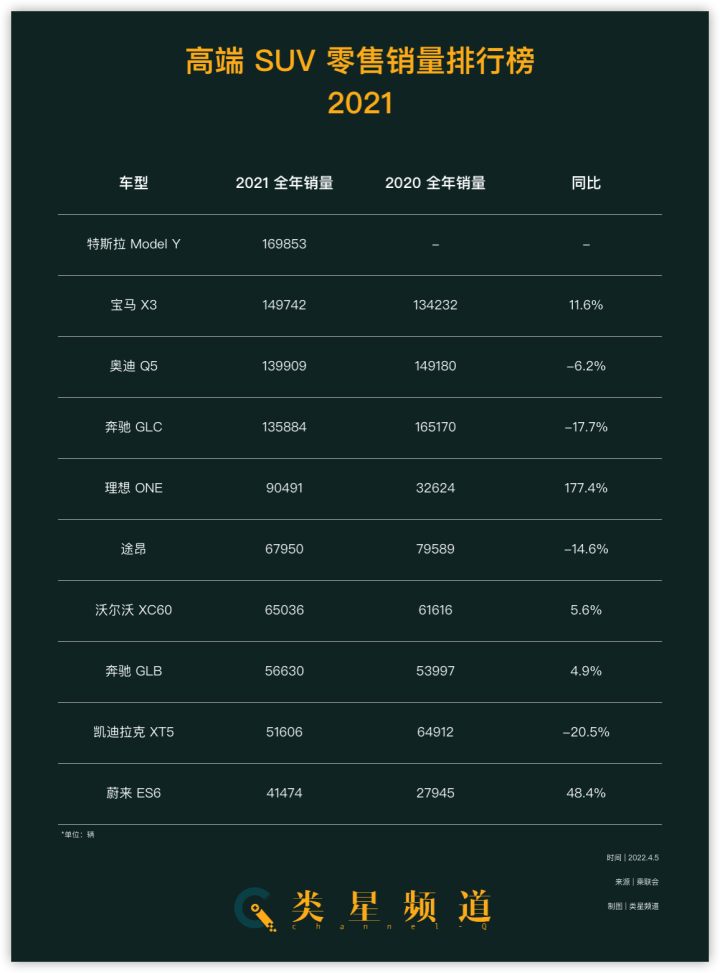
In the high-end SUV market, several new faces have appeared in the past few years, including Tesla Model Y, Li Auto ONE, and NIO ES6. In 2021, among them, Tesla Model Y has an annual sales volume of 169,853, surpassing the same level of Mercedes-Benz GLC, BMW X3, and Audi Q5, ranking first in high-end SUV retail sales. Li Auto ONE has a sales volume of 90,491, following BBA with a year-on-year increase of 177.4%, ranking fifth.
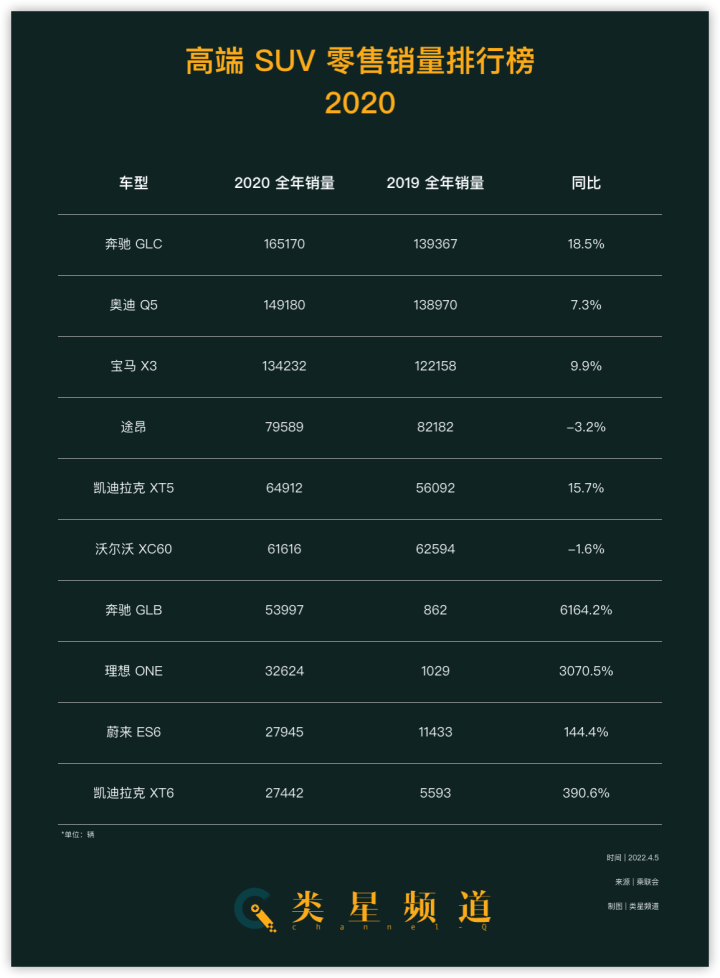
In the high-end SUV market with a starting price of more than 300,000 RMB, the top five rankings have evolved from “completely dominated by traditional brands” to a mixture of traditional brands and new brands within one year, and you can hardly ignore this significant change.
If we take stock, these models have some common characteristics, such as redefined vehicle platforms, electric powertrains that are ahead of their counterparts’ internal combustion engines, and intelligent driving and cockpit designs with better experiences supported by more powerful computing platforms. Also, without exception, the companies they belong to are new vehicle manufacturing companies that started from scratch.
Having a homogeneous market is boring, and the good news is that things are changing. In 2022, a group of new car brands supported by large state-owned auto companies are entering this market. Representatives include Beiqi-Jinhu, Dongfeng-Voyah, as well as SAIC-IM and Changan-Avita mentioned earlier.In this niche market, it is Avita that deserves the most discussion. The “success experience” of new carmakers shows that a redefined vehicle platform, a strong investment in intelligent and electric deployments is the key to new players entering the high-end SUV market. It is precisely in these three dimensions that Avita, in collaboration with three giants, Chang’an, Huawei, and Ningde Times, is challenging the market on the CHN platform.
It is difficult to judge the long-term benefits of Avita’s approach today, but this three-giant collaboration and bold venture made its first car model, Avita 11, full of highlights.
Ningde Times’ “Protege”
Let’s go back to the beginning of the article. One key component of Avita’s first strategic financing closing and commercial information change was: Qu Tao has officially joined the board of Avita as a director.
Who is Qu Tao? Public information shows that Qu Tao is Assistant to Ningde Times’ Chairman, Zeng Yuqun, and also serves as the Executive Director and General Manager of Investment in Ningde Times. He is responsible for Ningde Times’ external investment. After the first strategic financing closing, Ningde Times’ shareholding in Avita reached 23.99%, second only to Chang’an as the second-largest shareholder.
This will bring great momentum to Avita in the “electricity” dimension.
For example, on March 26th, Wu Kai, the Chief Scientist of Ningde Times, attended the electric vehicle Hundred-Person Conference and gave a speech, exposing the CTP 3.0 version of the latest system under Ningde Times. CTP 3.0 will achieve a density of ≥ 160 Wh/kg, ≥ 290 Wh/L for lithium iron phosphate battery system, and a density of ≥ 250 Wh/kg, ≥ 450 Wh/L for nickel cobalt manganese ternary lithium battery system.
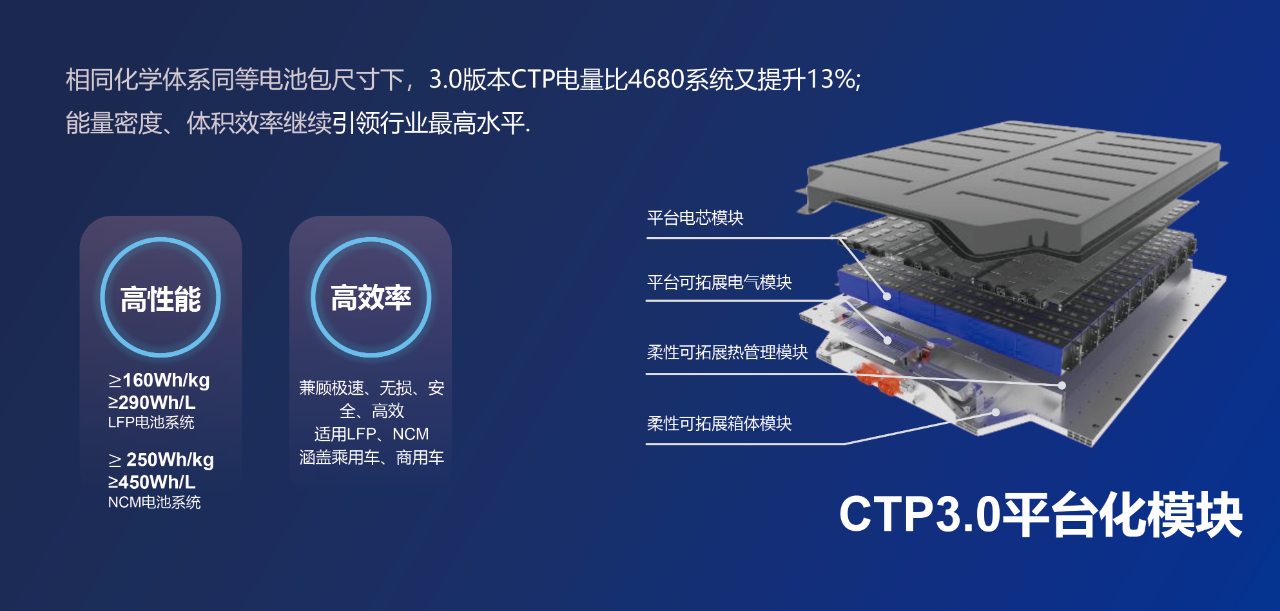
When such cutting-edge technologies are implemented in mass production, the “Protege” Avita will have the first-mover advantage in the industry, which will have a direct impact on product competitiveness.
Let’s leave aside the future and talk about the present. According to official data, Avita 11’s acceleration from 0 to 100 km/h will be less than 4s, and it is equipped with a 750V high-voltage charging system. The high-capacity battery version has a range of over 700 km and is equipped with a 240 kW supercharger, which can achieve 30% to 80% fast charging capability in 15 minutes.
This series of high-performance data tests the comprehensive performance of the power battery in cohesive discharge performance, fast charging and high energy density,long endurance, and basic high safety required by every automaker nowadays.This is directly related to the technical support from CATL. For example, in terms of avoiding spontaneous combustion of pure electric vehicles, specifically at the battery level to prevent thermal runaway, CATL is the first battery company in the industry to achieve heat diffusion technology on NCM 811 high energy density batteries. Similar technologies ensure that EV platform Avita 11 is at the best level of the impossible triangle balance of high energy density, high rate capability, and high safety of power batteries.
In terms of production capacity, CATL once again defended the champion in power battery installation in 2021, and held a dominant market share of over 50%. This asymmetric scale effect has important significance in promoting cost reduction.
Taking into account the upward trend of the entire battery raw materials in 2022, the price of lithium carbonate has risen from 50,000 yuan per ton a year ago to 500,000 yuan per ton. Many automakers have been forced to raise prices two or even three times, which has had a direct impact on order demand.
Large-scale upstream raw material supply chain price increases are not sustainable in the long term, but as long as they occur, they are enough to hurt automakers, especially for start-up companies like Avita. With CATL as an important shareholder, there is a very critical value for Avita’s supply chain security.
Now, let’s talk about the significance of Chang’an to Avita among the three giants.
At first glance of the rear 45° of Avita 11, it can be seen that the waistline and rear end shape of the car have a distinct European design flavor. Yes, Avita’s Chief Designer, Nader Faghihzadeh, is the former Creative Design Director of BMW. He once led the interior design of the fifth-generation BMW 7 series, which was considered one of the most beautiful BMW interiors in ages.
In BMW’s Project i, which is aimed at the intelligent and electrification transformation of the automotive industry, Nader participated in the design of the BMW i8 convertible. In November 2021, BMW’s new generation of flagship pure electric SUV iX was officially launched. The interior and exterior design of the i Next Vision prototype, which is the predecessor of the iX, was led by Nader. Now, Nader is the head of the Avita Munich Global Design Center.But besides that, all of Avita’s global vehicle planning center, R&D center and manufacturing center are located in Chongqing – the headquarters of Changan Automobile Group. This is obviously to efficiently share Changan’s engineering capabilities in vehicle R&D, supply chain management, and manufacturing.
From Changan’s perspective, it should be said that Changan has shown twelve-point willpower to promote Avita to the high-end with resource support. At the Avita brand’s first press conference on November 15th last year, Changan Automotive Chairman Zhu Huarong publicly stated: “Changan has accumulated a century of technical capabilities, along with the latest research results, and all have been generously given to Avita“.
Avita’s future production capacity will reach 350,000 vehicles per year. In October 2021, the first white body trial production of Avita 11 was offline while the first round of extreme cold testing of Avita 11 was completed in Yakeshi on March 9th.
With a first-round financing scale of only RMB 2.4 billion, Avita has already reached the progress of the CHN platform and Avita 11 approaching mass production. Compared with the new car companies of the same period, whether it is Avita’s own financial management or Changan’s large-scale resource support for Avita, Avita’s differentiated advantage is obvious.
More importantly, relying on the CHN platform, Avita will continue to launch new models after Avita 11, and move towards the mid-term goal of “four years and four cars”. Without healthy and sustainable financial calculations and financing plans, such large-scale new car launches are impossible.
But from the investment scale of the CHN platform and Avita 11, it is obvious that such planning has undergone detailed financial inputs and calculations.
Huawei’s Benchmark Project
Finally, let’s talk about Huawei.
The background of the intelligent electric vehicle market is that the second-generation intelligent platforms of the new car companies, led by We Xiaoli, each containing keywords such as NVIDIA Orin chips, LiDAR, and Qualcomm Snapdragon 8155 chips, will all be produced and marketed in 2022.
This higher intensity of competition makes companies like Avita have to put the intelligent platform in a more important position. Fortunately, Huawei, the core ally of Avita in this field, is a powerful player.An intuitive comparison shows that according to Huawei’s 2021 annual report, Huawei invested $1 billion in intelligent automotive solutions and had a research and development team of 5,000. On the other hand, among the new automakers, XPeng Motors has the fastest development progress and the largest scale in intelligent driving research and development, with a research and development investment of only 5.305 billion yuan and a team size of only 1,500 in 2022, covering the entire company’s research and development in intelligent driving, intelligent cabin, vehicle engineering, electronic and electrical engineering, and three-electric systems.
This is Huawei’s unequal advantage as a global consumer electronics giant in the automotive industry after being defeated in the smartphone market due to sanctions, with a large number of talents and financial resources.
It should be noted that Huawei has two different cooperation modes for automakers.
Huawei’s intelligent automotive solution is mainly promoted under the HI (HUAWEI Inside) mode, which mainly includes Huawei ADS intelligent driving system, Huawei HarmonyOS cabin, intelligent electric drive, intelligent network connection, and intelligent vehicle cloud services.
In addition to the BU of the intelligent automotive solution, Huawei’s consumer business BG has also launched the Smart Choice mode for automakers. Currently, the M5 in Huawei’s self-operated stores belongs to the Smart Choice mode. But compared with the Smart Choice mode, the HI mode is more like Huawei’s core. Huawei will produce a full-stack technical architecture for the models that cooperate under the HI mode, and maximize the engineering production of Huawei’s research and development achievements in the field of intelligent automobiles.
Avita 11 is a product based on the HI mode, and it is the model with the highest “Huawei content” in terms of cabin, intelligent driving, and powertrain.
Based on the model and official information that were announced on November 15th last year, Avita 11 is equipped with the Huawei MDC computing platform with a computing power of 400 Tops, and the entire vehicle is equipped with three lidar sensors.
Although there is no more information, based on the MDC computing platform and three lidar sensors, we can basically confirm that Avita 11 is another vehicle model equipped with the Huawei ADS full-stack solution. This means that Avita 11 has a 360-degree coverage of vision, millimeter-wave radar, and ultrasonic sensors and 270-degree coverage of lidar, making it one of the highest-performing perception systems in the current field of intelligent driving.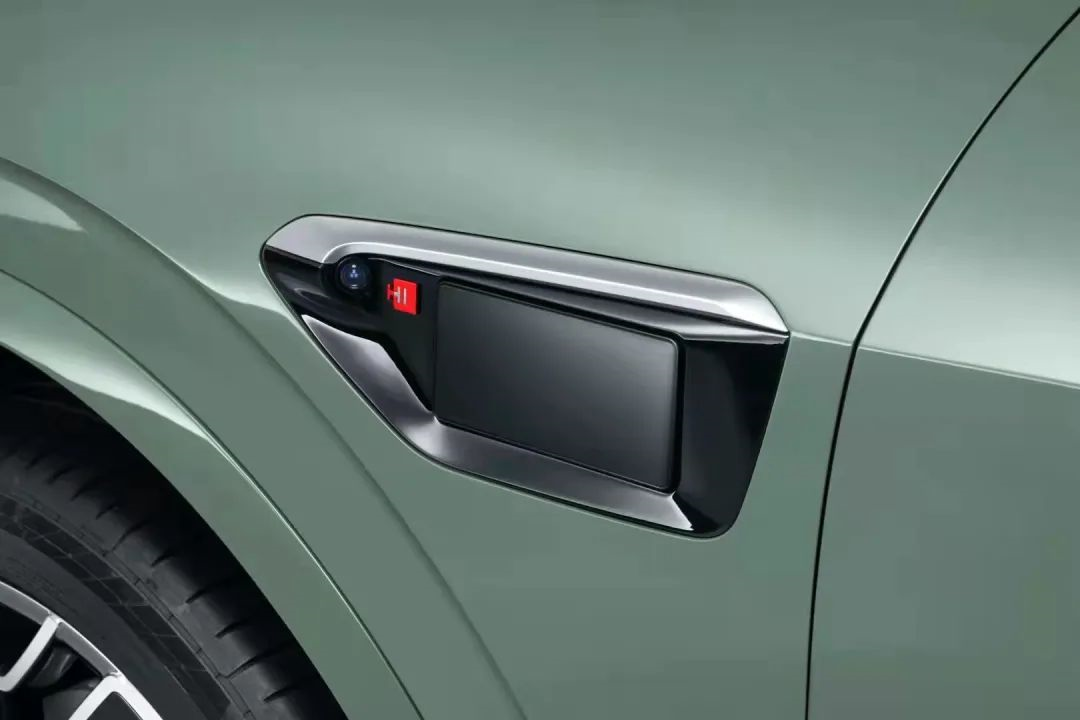
What’s more important than this high-performance hardware system, Huawei’s ADS algorithm, which is highly engineered and close to commercialization. Prior to the 2021 Shanghai Auto Show, Huawei held an ADS intelligent driving test ride experience near its Shanghai research institute, where the Huawei intelligent driving algorithm demonstrated its ability to cope with various working conditions encountered en route, even dynamic games with a large number of delivery couriers, leaving a deep impression on the outside world.
This gave the Avita 11 the confidence to compete head-on with Tesla and new car makers.
Compared to the WENJIE M5, which adopts a component supplier model, the JIHU Alpha S Huawei HI edition, which is 100,000 yuan more expensive than the regular version, is fully equipped with Huawei HI. The Avita 11, which is supported by Changan and Ningde Times, is obviously closer to “Huawei’s prototype engineering”.
It’s not just Avita that needs Huawei HI, but Huawei HI urgently needs a hot-selling product to prove itself.
Fortunately, Huawei doesn’t have to wait too long. According to previous plans, Avita 11 is expected to be officially released in the second quarter of this year, within the next three months, and mass delivery will begin in the third quarter. This speed is indeed fast.
About the Avita 11 and the bold practice of the new high-end route led by it and the alliance of giants, it may be a dark horse in the high-end smart electric SUV market this year. We will soon see the outcome.
This article is a translation by ChatGPT of a Chinese report from 42HOW. If you have any questions about it, please email bd@42how.com.
